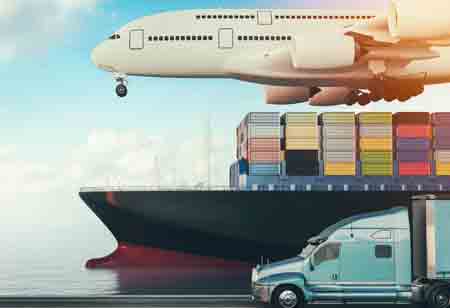THANK YOU FOR SUBSCRIBING
THANK YOU FOR SUBSCRIBING

By
Logistics Transportation Review | Wednesday, April 26, 2023
Stay ahead of the industry with exclusive feature stories on the top companies, expert insights and the latest news delivered straight to your inbox. Subscribe today.
LTL and FTL are often both of your primary choices when this occurs. The option you choose will likely be influenced by several variables, including the weight, size, and freight classification associated with the package, as well as the preferred delivery time, handling, and related expenses.
Fremont, CA: If an online shop is small, one could mail things simultaneously. However, when the company expands, one might have to deliver goods in larger quantities. LTL and FTL are both options when this occurs. Several variables will likely influence your choice, including the weight, size, and freight classification associated with the package. In addition, it will likely be affected by the preferred delivery time, handling, and related expenses. Let's look at FTL and LTL to prepare you for freight shipment.
Truck space distribution distinguishes LTL from FTL. There are still more factors to consider, and we'll discuss them in the following section.
LTL stands for Less-Than-Truckload
This option enables businesses to share space on a truck with other shippers that need more merchandise to occupy the whole vehicle (often fewer than 12 pallets). Therefore, if one only wants a third of the available space, the remaining two-thirds will be occupied by goods from other shippers. By sharing space, smaller-volume shippers can save money while filling the vehicle.
FTL stands for Full Truckload
It is used when the packages fill or nearly fill a truck (12 pallets or more). This is perfect for companies who send a lot of stuff. To prevent their goods from being mixed up with those of other shippers, smaller companies can pay for FTL even if they don't load the truck, but the cost-sharing advantage will ultimately be lost.
Businesses likely have a fair sense of whether the company will require LTL or FTL. However, it's crucial to take into account additional variables. So let's explore the six key factors in more detail.
• Size & Weight
Is the package heavyweight or lightweight? LTL shipments weigh between 100 and 5,000 pounds, whereas FTL shipments frequently weigh 10,000 pounds or more. If the weight of the cargo is between 5,000 and 10,000 pounds, it's essentially a coin flip for the majority of businesses, depending on other circumstances.
Size does factor in when deciding between LTL and FTL shipment. For instance, the shipment could be reasonably light yet strangely shaped or proportioned, making it impossible for other shippers' things to be tucked inside. One might not have an option but to select FTL in this situation.
• Speed
How soon does the shipment require arriving at its destination? Share space with other shippers and take advantage of LTL's cost reductions if there's no urgency and users need a deadline for delivery.
However, FTL is the greatest choice (even if the truck is partially full) if they need things to arrive soon. FTL shipments frequently pick up and deliver on the same truck, which speeds up delivery and eliminates the need for the driver to make many trips to drop off other shippers' goods. FTL shipping times are frequently assured since the goods come first and foremost.
• Freight Classification
There is a distinct classification for each good. For example, perishables may require FTL transport to reach their destination more quickly and avoid deterioration. So, while asking for estimates from carriers, make sure to grasp the categorization of the merchandise.
• Handling
Are users' products pricey, risky, or fragile? Even if their shipment only occupies part of the vehicle, users might want to think about FTL because the goods will stay on the same truck the entire way without being relocated or transferred during transportation. Less handling lowers the possibility of harm as well as the case of the object being misplaced or delivered. If they won't load a truck with their products, LTL is typically the best option for robust, less expensive items.
I agree We use cookies on this website to enhance your user experience. By clicking any link on this page you are giving your consent for us to set cookies. More info





